A Guide to the World of Origami Paper:
The Paper Basics
High quality origami models are only as good as the paper that you start with. That means that for most origami projects, something like copy/printer paper or color craft paper simply won't do. In this guide we will tell you about many of the different important foctors in choosing which paper to use for your folding project.Printing-
The printing process in origami paper is critical to making paper that can be folded and resist cracking. High quality locations in Japan use non-toxic long-lasting inks that fill into the cracks in the fibers of the paper to create a very smooth folding surface. This process also means that when you fold the paper, the ink has penetrated to ensure the white doesn't show or crack through when creasing the paper. This is far superior to the cheaper process (most commonly done in Chinese papers to save on ink costs) of dying the fibers of the paper first to make colored paper. Take a look at our process below.Paper Thickness-
The thickness of your origami paper is crucial to determining the types of models that you can fold, but there are trade-offs. Super thin paper can be folded into many layers without being bulky, but is often fragile and can break if folded in the same place repeatedly. On the other side of the spectrum, super thick paper will be very hard to crease multiple times but will be very strong. For example, think about the advantages and drawbacks of trying to fold a model with these types of paper:- Facial tissue
- Copy paper
- A cardboard box
The Paper Types
1. Standard Origami Paper or " Kami":
The Best Paper for Most Folders and Models
The best paper for origami is called "Kami" (the Japanese word for origami paper), the standard origami paper. Kami comes from Japan in factories that have been around for generations and have staff that have honed their skills over many years. They start with white base paper and ink or stamp various colors and designs onto it depending on the type of origami paper being created. So one of the feature of the Standard origami paper is that it has color on one side and the other side is white. Uncolored standard paper (or a pure white sheet) is .066 millimetres, paper dyed on one side (like every sheet other than white) is .071 millimetres thick.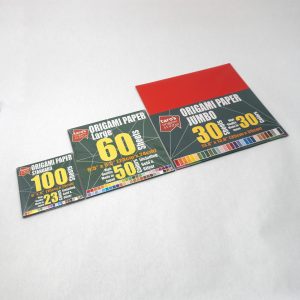
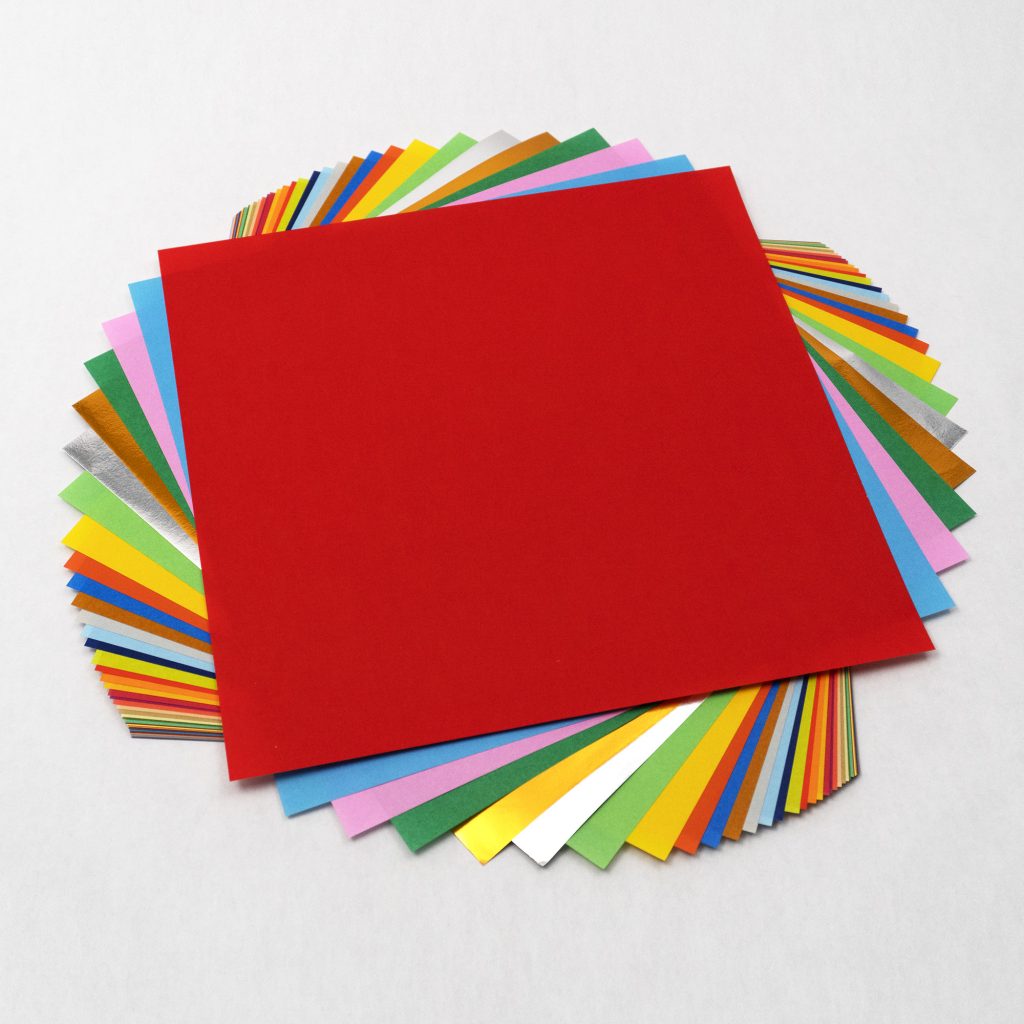
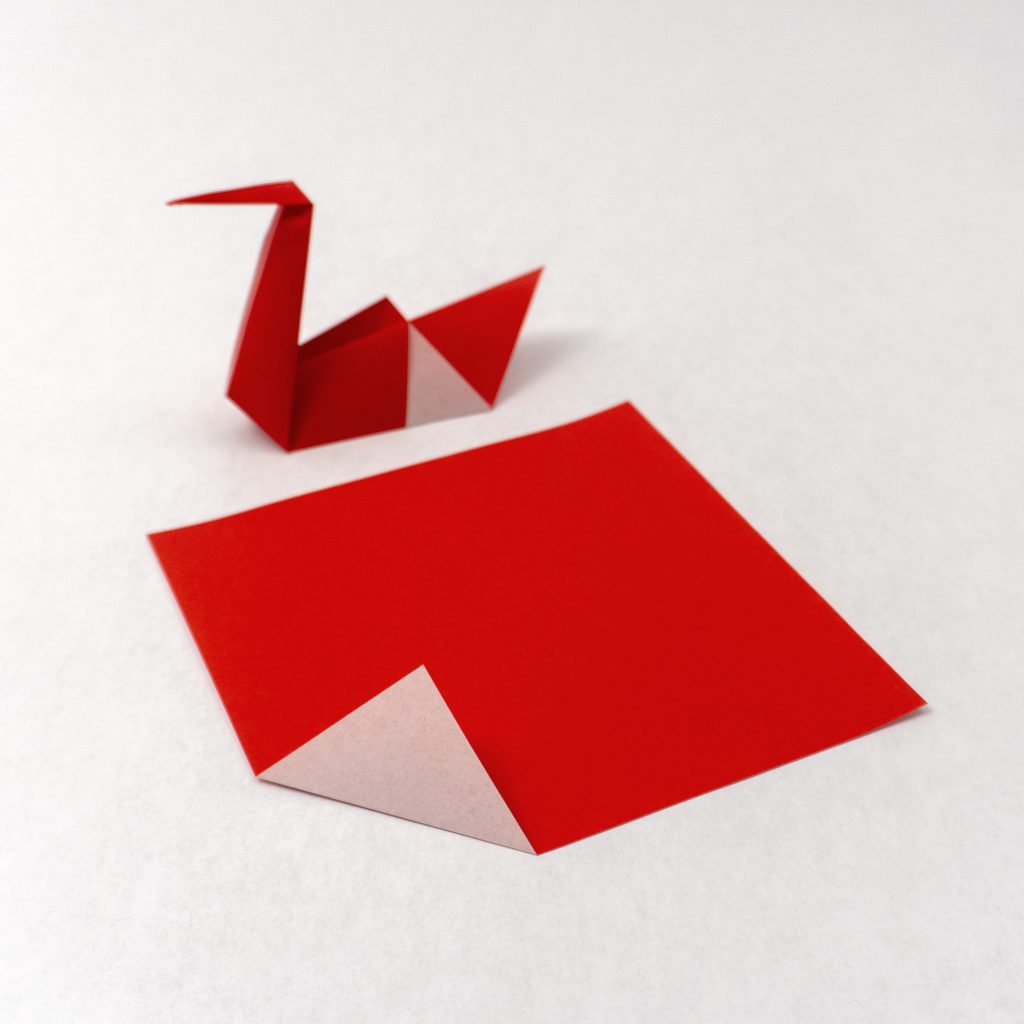
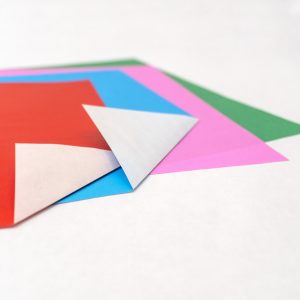
2. TANT Paper:
The Best Paper for Showcasing your Origami
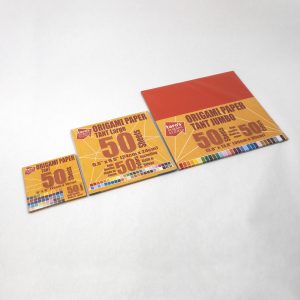

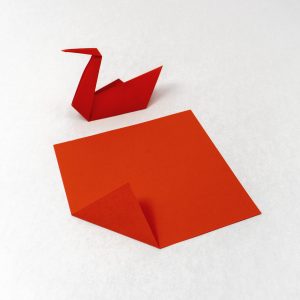
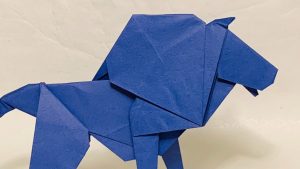
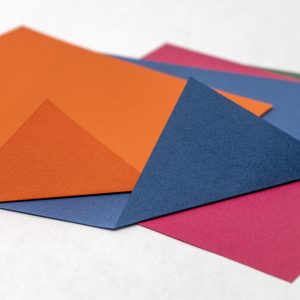
3. DUO COLOR STANDARD
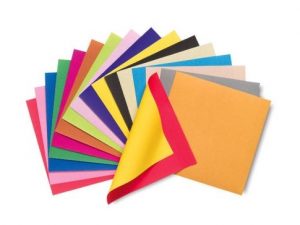
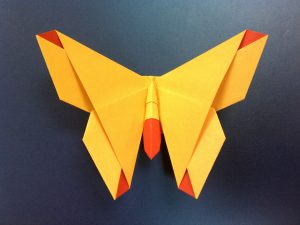 This paper is another kind of standard paper, but has both sides dyed with ink. When this is done properly, this requires a second inking process, but in cheaper versions of duo paper (particularly in China) the fibers themselves are dyed to save ink and money. It can be different colors on each side of the sheet, or it can also be the same color on both sides. This paper is more expensive than single color standard because of the second inking run, but less expensive than Tant. Duo is also only available in complimentary color combinations as well as the same color on both sides. Because of the extra layer of ink it is the thickest of the standard sheets measuring .076 millimetres per sheet.
This paper is another kind of standard paper, but has both sides dyed with ink. When this is done properly, this requires a second inking process, but in cheaper versions of duo paper (particularly in China) the fibers themselves are dyed to save ink and money. It can be different colors on each side of the sheet, or it can also be the same color on both sides. This paper is more expensive than single color standard because of the second inking run, but less expensive than Tant. Duo is also only available in complimentary color combinations as well as the same color on both sides. Because of the extra layer of ink it is the thickest of the standard sheets measuring .076 millimetres per sheet.
4. WASHI
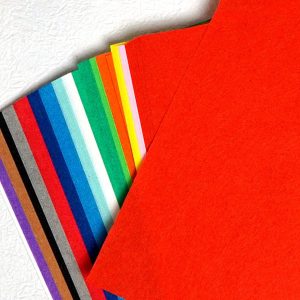
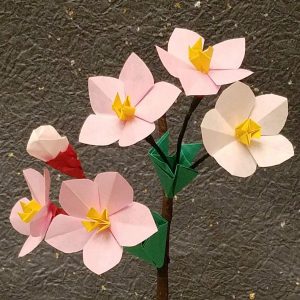
Washi is a traditional Japanese paper that’s made using long plant fibers. This paper has a very unique Japanese feel, and was originated by Japanese masters that have passed the skill on for generations. It is usually very thin and is often fabric-like to the touch. Washi paper comes in 50 sheet multicolored packs. Each sheet is .094 millimetres thick so it is thicker than all of the standard sheets, but thinner than Tant.
+ Washi is very thin, strong, and durable, and can be wet-folded because it has long fibers and there is no glue in the paper to hold it together.
+ Models folded with washi paper appear a bit more life-like because of the texture- the paper is very soft.
+ Every sheet is unique because of the fibers, and larger rolls are available.
- Washi is generally available only in basic colors.
5. TISSUE FOIL PAPER
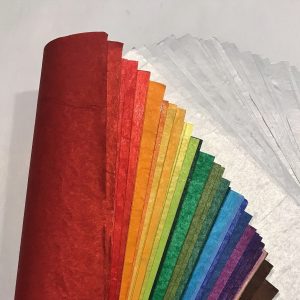
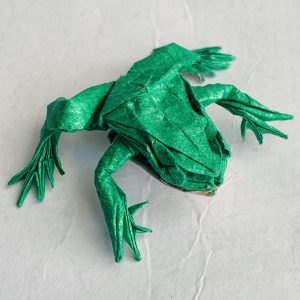 This paper has a color tissue paper to one or both sides of a sheet of aluminum foil sheet. Tissue foil is one of the easiest papers to use for origami, because it is a combination of foil and tissue paper. The foil makes it strong and stiff while the tissue makes it more flexible and can provide a wide variety of colors or patterns. In the past the only way to get this paper was to make it yourself, which can be costly and time consuming. It’s pretty thin, and can come in some of the largest sheets for origami paper available- up to 45cm squared (17 inches)
This paper has a color tissue paper to one or both sides of a sheet of aluminum foil sheet. Tissue foil is one of the easiest papers to use for origami, because it is a combination of foil and tissue paper. The foil makes it strong and stiff while the tissue makes it more flexible and can provide a wide variety of colors or patterns. In the past the only way to get this paper was to make it yourself, which can be costly and time consuming. It’s pretty thin, and can come in some of the largest sheets for origami paper available- up to 45cm squared (17 inches)
+ This is one of the easiest kinds of origami paper to use since it’s so thin and strong.
+ It comes in larger sizes, and is perfect for super complex folding
+ Each sheet is unique and has it's own texture.
+ It holds creases very well and the foil makes it very easy to shape models
- This paper is more expensive than others.
